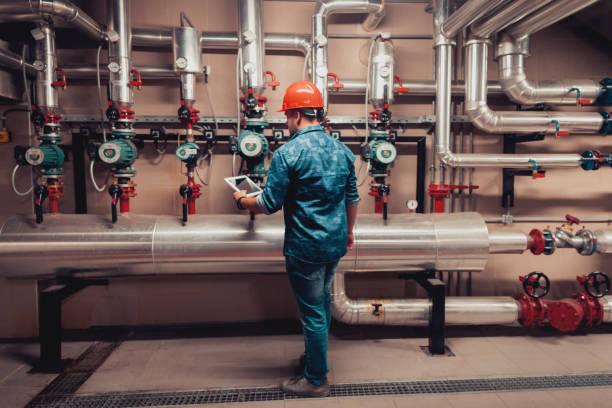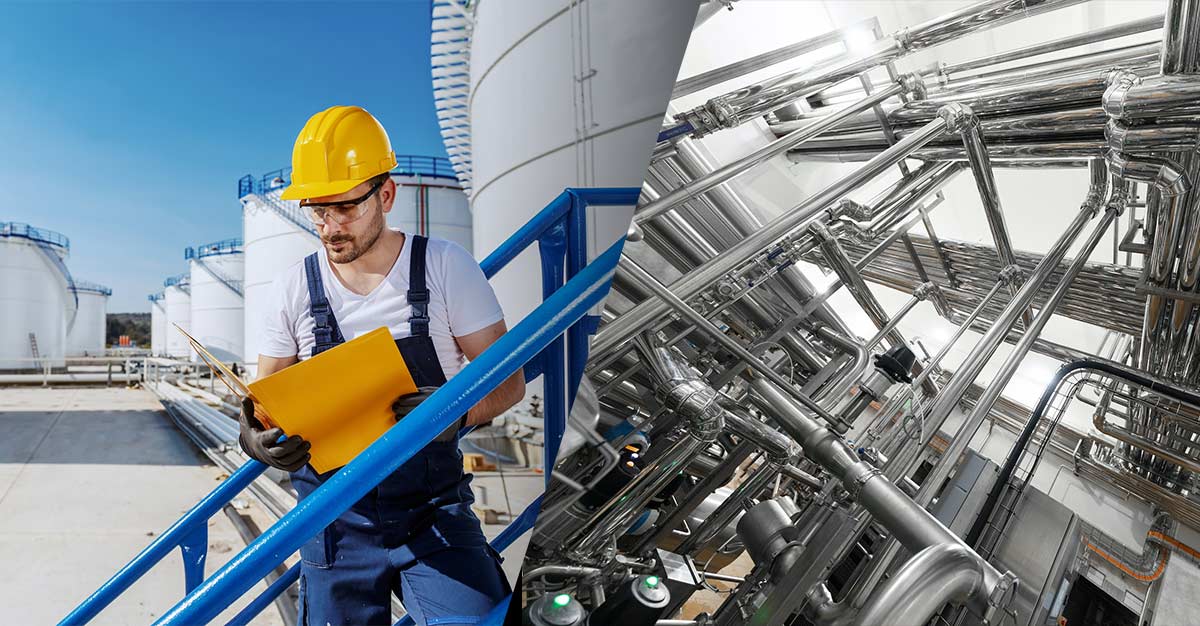Have you wondered what ANSI/ASHRAE/ACCA standard 183 is and why it matters? This informal article will explain this industry standard and its importance. We want to simplify Standard 183 and provide you with the knowledge you need to confidently traverse HVAC systems from their beginnings to their uses.
ANSI/ASHRAE/ACCA standard 183 covers the design, installation, commissioning, testing, maintenance, and operation of residential and commercial air conditioning systems. This standard addresses heat and ventilation system energy efficiency, indoor air quality, environmental effects, and performance. The main goal of this standard is to design and manage ventilation systems to maximize energy efficiency, good indoor air quality, low environmental impact, and consistent performance. Following this document’s criteria can benefit building owners, designers, and operators while encouraging sustainability and user comfort. Also, it defines critical terms to help everyone comprehend the standard. These definitions include HVAC terminology, including ventilation rates, air distribution efficiency, thermal comfort, and system maintenance. Applying the standard’s requirements requires understanding these definitions.
Requirements for the standard
The design standards in ANSI/ASHRAE/ACCA Standard 183 optimize heating, ventilation, and a liar conditioning system’s performance and efficiency. The criteria involve equipment selection, system size, airflow rates, and insulation. Air conditioning specialists may optimize energy use and user comfort by following these design guidelines for system size, equipment, and operation. Also, it specifies HVAC system installation standards for appropriate installation. These standards involve ducting, pipes, electrical connections, and controls. System integrity, leak prevention, and efficient and dependable operation depend on following these installation standards.
Additionally, it commissions and tests HVAC systems to ensure proper installation and operation. Tests include airflow, temperature differentials, and system balance. These criteria provide building owners and operators with assurance that their ventilation systems are working properly and in accordance with industry standards. Also, it requires extensive system maintenance and operation to ensure long-term performance and efficiency. Filter replacement, cleaning, lubrication, equipment inspections, and control system calibration are required. Following these maintenance and operating criteria helps air conditioning systems operate efficiently, create a comfortable interior atmosphere, and save energy over time.
Benefits of ANSI/ASHRAE/ACCA standard 183
The first benefit of this standard is enhanced energy efficiency, and compliance with it boosts ventilation energy efficiency. Buildings may save energy use and expenses by following the standard’s design, installation, and operating standards. Energy efficiency benefits building owners and the environment. The next benefit is the improved indoor air quality. The standard specifies indoor air quality best practices for buildings. Better ventilation, air exchange, and system maintenance reduce airborne pollutants and improve occupant health and comfort. The standard helps building owners develop healthier interior environments for residents.
In addition, with a rising focus on environmental sustainability, this standard reduces air conditioning system environmental effects. Buildings may lower their carbon footprint by improving energy efficiency, emissions, and refrigerant use. Building owners may help the environment by following the standard’s sustainable practices. Finally, the extensive standards and guidelines help building owners achieve consistent and dependable HVAC system operation. The standard’s design, installation, commissioning, testing, maintenance, and operating processes reduce system failures, limit downtime, and offer a comfortable interior atmosphere year-round.

Compliance with the standard
Adoption of standard – HVAC consults widely accept the standard of one eighty three. Building owners, designers, engineers, and heat, ventilation, and air conditioning specialists use this standard to plan, install, and operate ventilation systems. Its comprehensiveness and industry knowledge make it a go-to reference for best practices and industry standards.
Voluntary or mandatory compliance – Compliance with the standard is needed for maximum ventilation performance; however, jurisdiction and building type might differ. Compliance with the standard may be optional or required. To maximize the benefits of a well-designed and efficient HVAC system, follow the standard’s instructions regardless of compliance status.
Authorities with jurisdiction – Authorities Having Jurisdiction (AHJs) are vital to the standard 183 compliance. They enforce HVAC codes. AHJs check designs, installations, and operations to assure standard compliance. Compliance requires building owners, designers, air conditioning specialists, and AHJs to work together.
Challenges in implementation
The cost is one of the biggest obstacles to the implementation of standards. HVAC system upgrades and modern technology can be costly. Long-term advantages like energy savings and indoor air quality generally surpass early expenditures. Effective planning, budgeting, and incentive research can reduce implementation costs. The next challenge is the requirement of technical skills. The standard requires technical skills to design, install, commission, maintain, and operate air conditioning systems. The project’s complexity and size may demand qualified specialists, engineers, and technicians who comprehend the standard. Building operators should evaluate their technical skills and ensure they have the knowledge. In addition, the standard may need HVAC system changes. This might be difficult in older structures with limited space or infrastructure. Equipment retrofitting or replacement may cause temporary operating disruptions. Stakeholder preparation, collaboration, and communication can reduce implementation effects on existing systems.
Case studies
Commercial building implementation success – Many commercial buildings have embraced the standard and enhanced air conditioning system performance. By following the standard’s design and operating guidelines, a huge downtown New York City office building reduced energy use and expenditures. The building’s LEED accreditation increased its value and sustainability.
Residential application lessons – For energy savings and interior comfort, residential structures have adopted standard one eighty three. One example study was a multi-family housing development that installed and maintained the standard. Through frequent inspections, filter cleaning, and control calibration, the complex reduced resident complaints and enhanced system efficiency.
Real-world energy saving examples – ANSI/ASHRAE/ACCA Standard 183 has saved energy in many buildings across industries. The standard’s commissioning requirements cut energy use by 20% at a California hospital. A Texas retail chain cut its energy expenses by 15% in a year by following the standard’s maintenance requirements.
Related standards
Standard 180 – Commercial building HVAC system inspection and maintenance
This standard supplements Standard 183 by addressing commercial ventilation system inspection and maintenance. It provides best practices for inspections, problem-solving, and routine maintenance to maximize system performance and lifetime.
ANSI/ASHRAE/ACCA Standard 201 – Commercial building energy audits
Standard 201 addresses business energy audits. Building owners and operators can examine their energy use, identify areas for improvement, and implement energy efficiency programs by following this standard.
Industry recognition and support
ASHRAE
ASHRAE fully supports ANSI/ASHRAE/ACCA Standard 183. The HVAC industry’s foremost professional association, ASHRAE, developed and promoted the standard, lending credibility and experience to its implementation.
ACCA
Air Conditioning Contractors of America (ACCA) helped design standard one eighty three. ACCA, a reputable air conditioning professional group, collaborates to guarantee the standard meets industry best practices and ventilation contractors’ and technicians’ demands.
Working with other standards organizations
Collaboration with the International Code Council (ICC) and the International Association of Plumbing and Mechanical Officials (IAPMO) benefits standard one eighty three. This cooperation promotes heat, ventilation, and air conditioning industry uniformity and harmonization by aligning with other rules and standards.

Courses and certification for professionals
Courses and resources assist in ANSI/ASHRAE/ACCA Standard 183 implementation and knowledge. These include online courses, seminars, workshops, and industry conferences. ASHRAE and ACCA provide instructional resources and assistance to help professionals understand the complicated requirements and apply the standard.
Professional certifications – HVAC system design, installation, maintenance, and operation professionals can pursue the standard HVAC certification programs. These programs certify knowledge and abilities, boosting professional credibility and allowing people to contribute to industry best practices.
Future developments and revisions
Technological advancements updated
Heating, ventilation, and air conditioning is continually changing and embracing new technology. With periodic updates and modifications, ANSI/ASHRAE/ACCA Standard 183 will reflect these advances. As energy-efficient solutions, smart controls, and renewable energy sources become more common, the standard will include guidelines on incorporating them into ventilation systems.
Implementing feedback and lessons
Industry professionals and building owners will provide input and lessons learned as more buildings implement standard one eighty three. These comments will help the standard stay current, practical, and successful in promoting energy-efficient and sustainable air conditioning systems.
Conclusion
Finally, ANSI/ASHRAE/ACCA Standard 183 provides a complete framework for planning, installing, commissioning, maintaining, and operating HVAC systems. Buildings can increase energy efficiency, indoor air quality, environmental impact, and air conditioning performance by following this standard. An efficient ventilation system requires compliance with the standard, which may be optional or required depending on the jurisdiction. Industry assistance, training, and certification help apply the standard. New innovations and comments will keep the standard at the forefront of sustainable, energy-efficient, and dependable heat, ventilation, and air conditioning systems.



